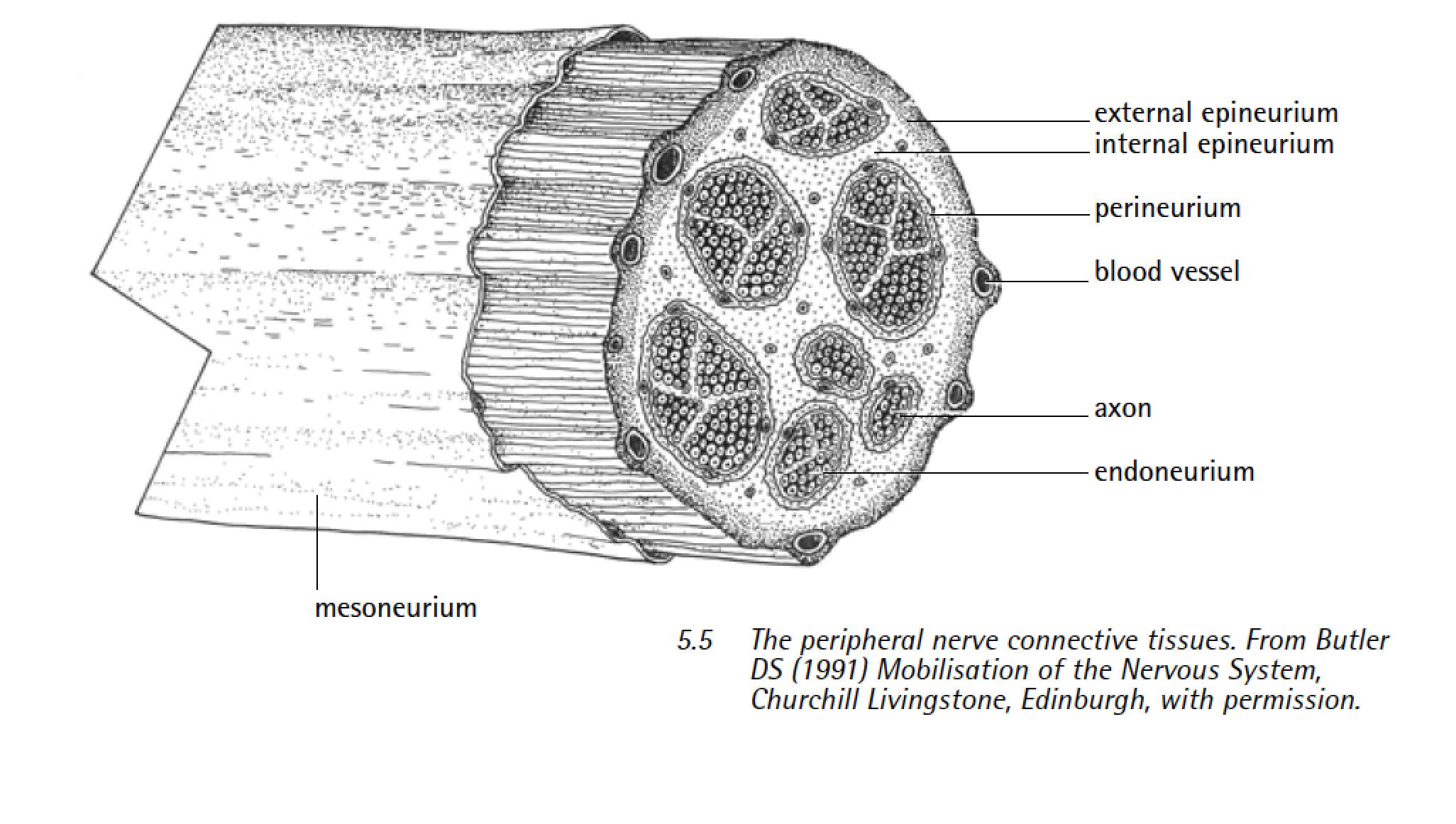Peripheral nerves require extraordinary mobility in relation to surrounding tissues, sometimes sliding up to 2 centimetres as we move. This is because nerves are long (they are made up of the longest cells in our body) and often cross joints some distance from the axes of motion – think about driving round a round-a-bout- the further you are away from the centre the greater the distance you have to travel.
They need to slither and slide snake-like! A key connective tissue that facilitates this is the mesoneurium (Fig 1) – kind of like a condom around the nerve. Few people study it or are even aware of the mesoneurium – perhaps peripheral nerves just aren’t trendy enough for researchers these days.
[Fig 1]
The peripheral nerve surgeon, Hanno Millesi, who alerted us to it in the 1970’s is still the main voice for the mesoneurium. This overlooked bit of connective tissue is what makes a nerve feel slippery or flick away when palpated. The nerve slides in this sheath during movement and to some degree the mesoneurium will slide as well. Inflammation or scarring of the mesoneurium can lead to neuroimmune irritation and potential mid axon discharge. Those administering local anaesthetics to nerve should put it on and not inside the mesoneurium.
You won’t find much on the mesoneurium (aka. adventitia, paraneurium) in the literature – let us know if you do but this nugget is a reminder that early graded mobilisation post injury is so logical, and some local tenderness over nerves could involve this tissue. And next time you are watching someone dancing vigourously, pause and think “wow that nerve mesoneurium must be nice and slippery and smooth – it’s getting a real workout”.
-David Butler
For reviews of the mesoneurium see:
Butler DS (2000) The Sensitive Nervous System. Adelaide Noigroup Publications. Pp 103-104, 380, 405-410.
Millesi H, Zoch G and Riehsner R (1995) Mechanical properties of peripheral nerves. Clinical Orthopaedics and Related Research 314: 76-83 (and subsequent literature by Millesi H)
Useful Links
Bodily Relearning, Boyd BS
Neurodynamic techniques Handbook & Videos, Butler DS
The Sensitive Nervous System, Butler DS
The Mobilisation of the Neuroimmune System course (MONIS): Based on the latest evidence, the Mobilisation of the Nervous System course has been updated and re-written ‘from the basic science up’, integrating the neuroimmune system as a critical player in learning, memory, movement and sensitivity. The MONIS course provides a clinical reasoning framework to identify those patients who will benefit from neurodynamic mobilisation and the essential practical skills to examine and manage the physical health of the nervous system. Search for a course here.

Brilliant …I love noijam!! Can we look forward to this course in the UK soon??? Please??
Hey thanks Astrid!
This “essence” of this course is already in the UK as Mobilisation of the Nervous System. All faculty has been working on the update. We will test any new material on the Aussies first and get it right before venturing to the UK!
All the best
David